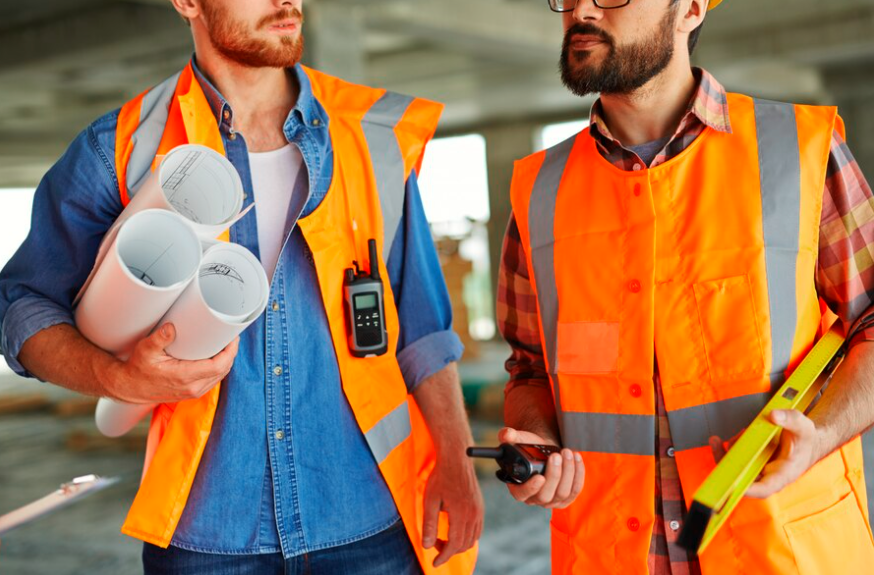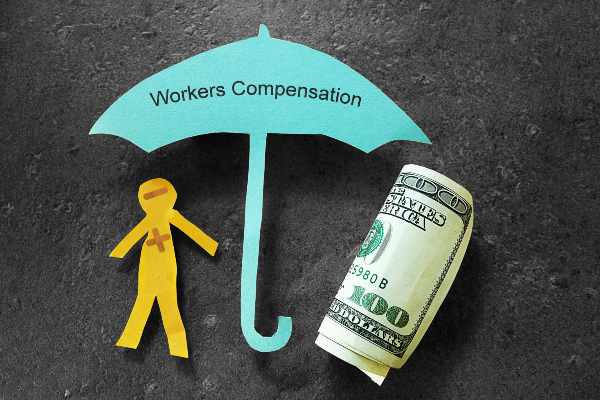Construction site injury claims are crucial for anyone involved in the construction industry, where the risk of injury is a daily reality.
- Construction sites are inherently dangerous, with numerous hazards that can lead to accidents and injuries.
- Workers face the risk of falls from heights, machinery accidents, and electrical hazards.
- Legal claims can help injured workers get compensation for medical expenses, lost wages, and pain and suffering.
In Southern California, getting injured on a construction site isn’t just about dealing with physical pain. It’s about facing financial challenges due to medical bills and lost wages. If you or a loved one finds yourselves in such a situation, understanding the complexities of construction site injury claims can significantly impact your financial stability and recovery process. This guide will serve as your ally in navigating the legal intricacies, keeping you informed and empowered.
Understanding Construction Site Injury Claims
When injuries happen on construction sites, construction site injury claims are the path to getting help. These claims can be complex, involving different types of compensation and legal responsibilities. Let’s break down the essentials.
Workers’ Compensation
Workers’ compensation is a no-fault system that provides benefits to workers injured on the job. This means you don’t have to prove anyone was at fault to receive compensation.
Key Benefits:
- Medical Expenses: Covers hospital bills, doctor visits, and rehabilitation costs.
- Lost Wages: Provides partial wage replacement if you’re unable to work.
- Disability Benefits: For temporary or permanent disabilities resulting from the injury.
Most states require employers to carry workers’ comp insurance. However, only employees are eligible, not independent contractors. If you’re wrongly classified, you might be able to challenge this and access benefits.
Personal Injury Claims
In some cases, you might have more than just a workers’ comp claim. Personal injury claims come into play when a third party’s negligence caused your injury.
Third-Party Liability:
- Who Can Be Liable?: Property owners, general contractors, subcontractors, equipment manufacturers, architects, and engineers.
- Negligence Claims: You must prove the third party had a duty of care, breached that duty, and caused your injury.
Personal injury claims can offer compensation for pain and suffering, which workers’ comp does not cover. However, they require proving fault, which can be more complex.
Third-Party Liability
Third-party liability is a crucial concept in personal injury claims. If someone other than your employer is responsible for your injury, you may be able to sue them.
Examples of Third-Party Liability:
- Equipment Manufacturers: If a faulty piece of machinery caused the accident.
- Subcontractors: If another contractor’s negligence led to your injury.
- Property Owners: If unsafe conditions on the property contributed to the incident.
Understanding these different avenues for claims can be overwhelming, but they are essential for ensuring you receive the compensation you deserve. Navigating these claims often requires legal guidance to effectively manage the complexities involved.

This knowledge can empower you to make informed decisions about your case and help you secure the financial support needed for recovery. Next, we’ll explore the steps to take immediately after a construction site injury to protect your rights and maximize your claim potential.
Steps to Take After a Construction Site Injury
Experiencing an injury on a construction site can be overwhelming. Knowing the right steps to take can protect your rights and help you build a strong case. Here’s a simple guide to follow:
1. Seek Immediate Medical Attention
Your health is your top priority. Get medical help right away, even if the injury seems minor. Some injuries, like internal ones, might not be obvious at first. A doctor’s visit not only ensures your well-being but also creates a medical record, which is crucial for your claim.
2. Report the Injury to Your Employer
Once you’ve addressed your immediate medical needs, inform your supervisor or employer about the injury. Report it as soon as possible, preferably in writing. This is vital because many states have strict deadlines for reporting workplace injuries. Missing these deadlines could mean losing your right to compensation. Be specific about the details: how, when, and where the injury occurred.
3. Document Everything
Good documentation can make or break your claim. Take photos of the injury and the accident site. Keep a written account of what happened while it’s still fresh in your mind. Collect names and contact information of any witnesses. This documentation will support your case and help your lawyer build a strong argument.

4. Consult a Lawyer
Navigating the claims process can be complex. Consult a lawyer who specializes in construction site injuries. They can guide you through the process, negotiate with insurance companies, and ensure your rights are protected. It’s often best to consult a lawyer before filing your claim to avoid common pitfalls.
5. Keep Records of Expenses and Lost Wages
Maintain a detailed record of all expenses related to your injury. This includes medical bills, medication costs, travel expenses for medical appointments, and any other related costs. If you’re unable to work, document your lost wages. These records are crucial for ensuring you receive adequate compensation.
6. Be Cautious with Social Media
Avoid posting about your injury or activities on social media. Insurance companies might monitor your online presence, looking for evidence to dispute your claim. Posts that contradict your injury claim could be used against you.
Taking these steps can significantly impact the success of your construction site injury claim. Next, we’ll dig into navigating the workers’ compensation system to ensure you get the benefits you’re entitled to.
Navigating Workers’ Compensation
When you’re injured on a construction site, workers’ compensation is often your first source of relief. This system is designed to provide benefits without needing to prove fault, making it easier for injured workers to get help quickly.
The No-Fault System
In workers’ compensation, the no-fault system means you don’t have to prove your employer was negligent. Whether you slipped on a wet floor or were hit by falling debris, you’re generally eligible for benefits. This setup helps speed up the process, getting you the support you need without lengthy legal battles.
Coverage for Medical Expenses and Lost Wages
Medical expenses are covered under workers’ compensation. This includes doctor visits, hospital stays, medication, and rehabilitation costs. Essentially, any medical treatment you need because of your injury should be covered.
If you’re unable to work due to your injury, lost wages are another critical component of workers’ compensation. Typically, you’ll receive a portion of your average weekly wage, helping to ease the financial burden while you recover.

Employee vs. Independent Contractor
Not everyone on a construction site is eligible for workers’ compensation. Employees are generally covered, but independent contractors are not. This distinction is crucial because it affects your eligibility for benefits. If you’re classified as an independent contractor, you may need to explore other options, like a personal injury claim, to recover damages.
Understanding these elements of workers’ compensation can help you steer the system more effectively. Next, we’ll explore the potential for personal injury claims in construction accidents and how they differ from workers’ compensation.
Exploring Personal Injury Claims in Construction Accidents
When it comes to construction site injury claims, workers’ compensation isn’t the only option. Sometimes, the path to compensation involves personal injury claims, especially when a third party is involved. Let’s break down what this means.
Third-Party Claims
In construction accidents, a third-party claim might arise when someone other than your employer is responsible for your injury. For example, if a piece of equipment malfunctions because of a manufacturing defect, you might have a claim against the manufacturer. Or, if a subcontractor on the site acted negligently, they could be liable.
Negligence and Duty of Care
Personal injury claims often hinge on the concept of negligence. This means someone failed to act with the level of care that a reasonable person would in similar circumstances. In a construction setting, this could involve not following safety protocols or using faulty equipment.
The idea of duty of care is central here. Everyone on a construction site has a responsibility to ensure the safety of others. When this duty is breached, and it leads to an injury, the responsible party might be liable. For instance, if a subcontractor fails to secure a ladder properly, causing it to fall, they may have breached their duty of care.
Breach of Duty
To succeed in a personal injury claim, you typically need to show a breach of duty. This means proving that the responsible party didn’t meet their obligations, leading to your injury. Evidence can include witness statements, safety reports, or expert testimony.
Understanding these aspects of personal injury claims can open up additional avenues for compensation beyond workers’ compensation. In the next section, we’ll tackle some frequently asked questions about construction site injury claims.
Frequently Asked Questions about Construction Site Injury Claims
What is the most common injury in the construction trades?
In the construction world, falls, slips, and trips are the most common injuries. Imagine working on a high scaffold and suddenly losing your footing. Falls from heights can lead to serious injuries like fractures or even traumatic brain injuries. Slips and trips may happen when the ground is uneven or cluttered with tools and materials, causing workers to lose balance. It’s crucial to follow safety protocols and use protective gear to minimize these risks.
Can I lose my job due to an injury?
Worried about job security after an injury? It’s important to know that laws are in place to protect you. Employers can’t legally fire you just for getting hurt on the job. They must provide reasonable accommodations if you’re able to return to work with some limitations. This might mean adjusting your duties or work hours to suit your recovery needs. Always communicate openly with your employer and document all conversations about your job status and any accommodations.
What to do if you get injured in the workplace?
If you’re injured at work, take the following steps right away:
-
First Aid: Get immediate first aid to stabilize your condition. This could be as simple as bandaging a cut or more involved, like immobilizing a limb.
-
Medical Treatment: Seek professional medical care promptly. This ensures your injuries are properly assessed and treated. Keep records of all medical visits and treatments as they will be crucial for your claim.
-
Employer Notification: Report the injury to your employer as soon as possible. This is a crucial step in the workers’ compensation process. Provide all details about how and when the injury occurred.
By following these steps, you’ll be better positioned to secure the benefits and compensation you deserve. In the next section, we’ll dive deeper into the role of an attorney in construction site injury claims.
Conclusion
At Adam Krolikowski Law Firm, we understand the challenges you face after a construction site injury. With over 25 years of experience, we have the knowledge to guide you through the legal maze. Construction site injury claims can be complex, but we’re here to help you find the right path.
Our team is dedicated to providing strong legal representation for accident victims. We take on cases that others might avoid, ensuring that every client gets the attention they deserve. From navigating workers’ compensation to exploring personal injury claims, we’re committed to maximizing your recovery.
If you’ve been injured on a construction site, don’t steer this alone. Let us help you build a strong case. Visit our Construction Accident Lawyer in Orange County page to learn more about how we can assist you.
Trust us to handle your case with care and expertise. We’re ready to stand by your side and fight for the compensation you’re entitled to.
